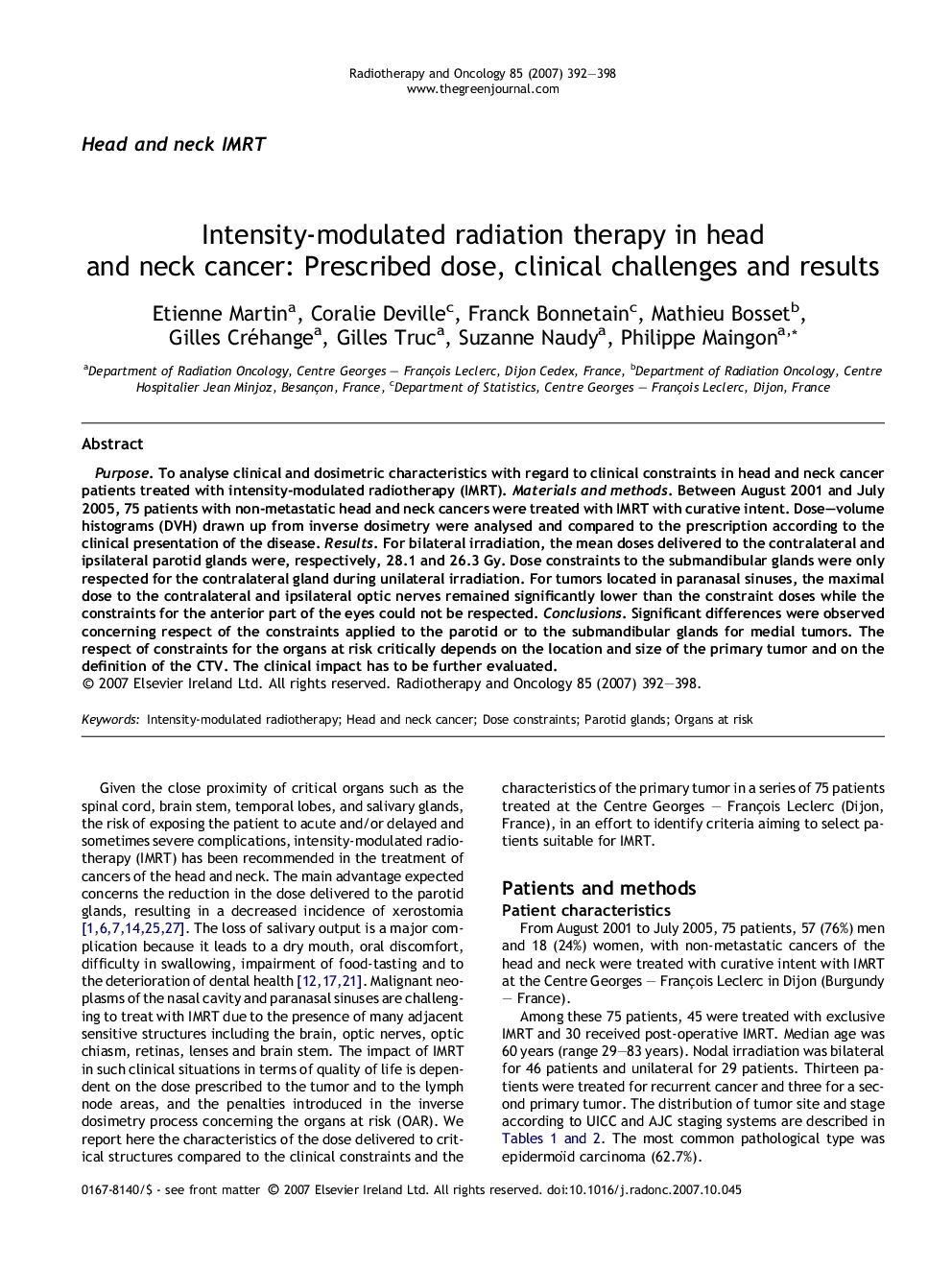| Article ID | Journal | Published Year | Pages | File Type |
|---|---|---|---|---|
| 2160607 | Radiotherapy and Oncology | 2007 | 7 Pages |
Purpose. To analyse clinical and dosimetric characteristics with regard to clinical constraints in head and neck cancer patients treated with intensity-modulated radiotherapy (IMRT). Materials and methods. Between August 2001 and July 2005, 75 patients with non-metastatic head and neck cancers were treated with IMRT with curative intent. Dose–volume histograms (DVH) drawn up from inverse dosimetry were analysed and compared to the prescription according to the clinical presentation of the disease. Results. For bilateral irradiation, the mean doses delivered to the contralateral and ipsilateral parotid glands were, respectively, 28.1 and 26.3 Gy. Dose constraints to the submandibular glands were only respected for the contralateral gland during unilateral irradiation. For tumors located in paranasal sinuses, the maximal dose to the contralateral and ipsilateral optic nerves remained significantly lower than the constraint doses while the constraints for the anterior part of the eyes could not be respected. Conclusions. Significant differences were observed concerning respect of the constraints applied to the parotid or to the submandibular glands for medial tumors. The respect of constraints for the organs at risk critically depends on the location and size of the primary tumor and on the definition of the CTV. The clinical impact has to be further evaluated.
